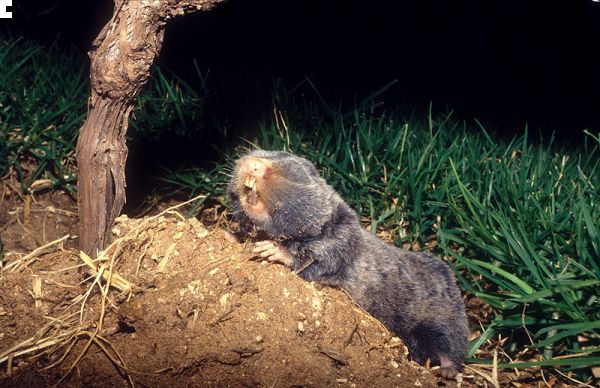Cellular mechanisms developed by the blind subterranean rat to survive in conditions of low oxygen levels (hypoxia) can help fight cancer, according to a new joint study by researchers from the Institute of Evolution at the University of Haifa and the University of Illinois

Cellular mechanisms developed by the blind subterranean rat to survive in conditions of low oxygen levels (hypoxia) can help in the fight against cancer, according to a new joint study by researchers from the Institute of Evolution at the University of Haifa and the University of Illinois published in FASEB magazine and funded by the Israel-United States Research Foundation (BSF) ).
"The mechanisms developed by the rat to survive in conditions of hypoxia are similar to the mechanisms that develop cancer cells. If we manage to understand how these mechanisms work, which allow the underground rat to live its 'normal' life, we may better understand how destructive cancerous tumors survive and develop," explained Prof. Aharon Avivi from the University of Haifa, who conducted the research in collaboration with Dr. Mark Band from the University of Haifa. Illinois.
Scientific attention to the uniqueness of the blind subterranean rat was drawn many years ago by Prof. Avitar Nebo, the founder of the Institute of Evolution at the University of Haifa. The subterranean rat has adapted many abilities that allow it to live in closed channels underground, among them, the ability to live in conditions of lack of oxygen, to the point of being able to survive in an environment of 3% oxygen (in contrast to the 21% oxygen found in the air we breathe).
In recent years, scientists have focused their research on isolating and characterizing the mode of action of genes that allow rats to survive underground in a low-oxygen environment. This is how the current study began, but as often happens in science, an equally important discovery was discovered when the researchers analyzed the results they received.
In the current study, the researchers wanted to check if there are differences in the activity of the BNIP3 gene between the underground rat and a normal rat, swimming above ground, that was put into a state of hypoxia. From the findings, it became clear that in rats subjected to hypoxic stress, a high expression of the gene was found, one of whose functions is to protect the body in a state of lack of oxygen. In contrast, in the blind rat there was almost no change in the expression of this gene. According to Prof. Avivi, one of the characteristics of a large number of cancerous tumors in humans is the inactivation of the BNIP3 gene under conditions of hypoxia. In other words, the activity model of certain molecular-genetic systems that enable a "normal" life for the underground rat is similar to the activity of those in cancerous tumors in humans.
"If we manage to understand the genetic-molecular mechanisms that allow the underground rat to live its life, we may be able to contribute to the understanding of the survival mechanisms of cancerous tumors, which are so pathological and destructive, with the hope of finding new and effective ways to fight the disease," noted Prof. Avivi.
These findings join similar findings, found by these researchers, regarding the expression of two other genes that work in the underground rat and in cancerous tumors in a similar way, and different from how they work in healthy tissues. The first, the gene whose function is to encourage the growth of new blood vessels (VEGF) and which "thanks to" the cancer tumor cells receive a constant supply of oxygen and survive, just as "thanks to" various tissues of the rat excel in a significantly higher concentration of blood vessels than, for example, in the rat, which allows them to cope with a lack of oxygen below the surface; the second, the p53 gene, whose product controls the activity of a large number of other genes - some of which work in cell death mechanisms, and some of which work in DNA repair mechanisms. In many cancerous tumors, as well as in the underground rat, and probably due to Lack of oxygen, the gene encoding p53 undergoes structural changes, following which it activates the "repairing" genes with a much higher efficiency than the "killing" genes.

7 תגובות
Is this rat the one that causes small piles of sand to appear in the field?
I always wondered who made them
And if we are talking about the creature living on little oxygen and in general about a life delay, you should read the following article from Calcalist Madad.
http://www.calcalist.co.il/local/articles/0,7340,L-3244724,00.html
And in the meantime - while you are grumbling, the chances of recovery from cancer have improved significantly
point
For years this was my fairly regular reaction to reading such articles, at some point I stopped writing it because I felt I was repeating myself.
You are right, it is depressing
Another discovery... so many "discoveries that have implications for cancer treatment" and in practice, Gornisht.